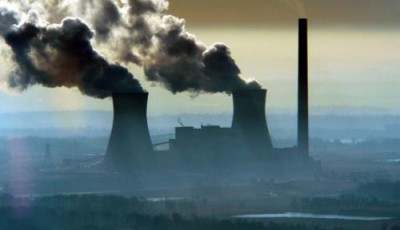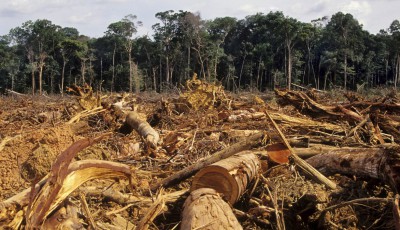New patent boosts CO2 capture hopes
 By Tim Radford
By Tim Radford
LONDON, 16 September, 2016 – A technology that could in theory catch 90% of carbon dioxide from coal-fired power stations has been patented by US government scientists.
Employing an enzyme-based membrane fabric 10 times thinner than a soap bubble, it could separate carbon dioxide from nitrogen or oxygen and speed up its dissolution in water by a factor of 10 million. And its triumphant designers say that, in laboratory trials, it does the job − at a cost-effective $40 a ton.
“If we applied it to a single coal-fired power plant, then over one year we could avoid CO2 emissions equivalent to planting 63 million trees and letting them grow for 10 years,” says Susan Rempe, a research professor in biological engineering at Sandia National Laboratories in Albuquerque, New Mexico.
Carbon capture technology is – and has looked so for some time – a last resort for a world of climate change.
Global temperatures
Greenhouse gas emissions from coal, gas and oil combustion since the dawn of the 19th century and the coming of the machine-age century have pushed carbon dioxide ratios in the atmosphere from less than 300 parts per million to 400ppm everywhere, and global average temperatures have risen by 1°C.
The nations of the world agreed in Paris last December to try to reduce emissions and hold global warming to significantly less than 2°C altogether, but there is evidence that national plans tabled so far may not be enough.
Meanwhile, there are 600 coal-fired power stations in the US alone, and researchers have argued for years that carbon dioxide could be trapped and buried, or turned into some useful biofuel.
Some have argued that it cannot be safely done and is too risky, while other research groups have shown that, in theory at least, carbon dioxide once captured could be safely stored.
But the commercial technologies used now bubble CO2 into a chemical-based solution designed to absorb the gas. The process demands high pressure facilities and uses about a third of the energy the plant generates.
“Over one year we could avoid CO2 emissions
equivalent to planting 63 million trees and
letting them grow for 10 years”
Overall, prospects have not been hopeful for successful capture at speed, cheaply and on a huge scale.
So the Sandia enzyme-based membrane – its trademark name is CO2 Memzyme – at least offers a new approach. But it’s still a laboratory product, and commercial use is a long way off.
Scaling up to power station practicality remains a challenge, but Professor Rempe and her colleagues think the technology can meet the US Department of Energy’s target of 90% of CO2 emissions by 2025, at $40 a ton.
Carbon dioxide has to be passed through a ceramic or polymer membrane to separate it from other gases. The Sandia scientists were inspired by a soap bubble flow meter – a soap bubble is 200 times thinner than a human hair – to devise a water-based membrane stabilised by porous silica in a layer 10 times thinner than a soap bubble.
They loaded the membrane with a natural enzyme called carbonic anhydrase − naturally found in mammal muscles, blood and lungs to dispose of carbon dioxide. They then backed it with a water-repellent film on one side and a hydrophilic (or water-loving) film on the other.
Dissolution of CO2
And by the end of the exercise, they had a sample that, in laboratory tests, can speed up the dissolution of CO2 in water 10 million times faster, and without taking up oxygen or nitrogen. Then they confined it into a flow system and found that the crowding effect actually accelerated performance.
What’s more, the membrane lasted for months and operated at temperatures of 65°C to produce 99% pure carbon dioxide, which could ultimately either be sequestered or used for biofuel, or exploited by the chemical industry.
But the membrane is still only a laboratory experiment. Scaling up to power station practicality remains a challenge.
The research − backed by US government agencies and partnered with the University of New Mexico − goes on as the Sandia scientists explore the possibilities of other enzymes that are even more heat-tolerant.
“Together, we developed a membrane that has both high selectivity and fast flux for CO2,” Professor Rempe says. “With optimisation for industry, the Memzyme could be the solution we’re looking for to make electricity both cheap and green.” – Climate News Network







